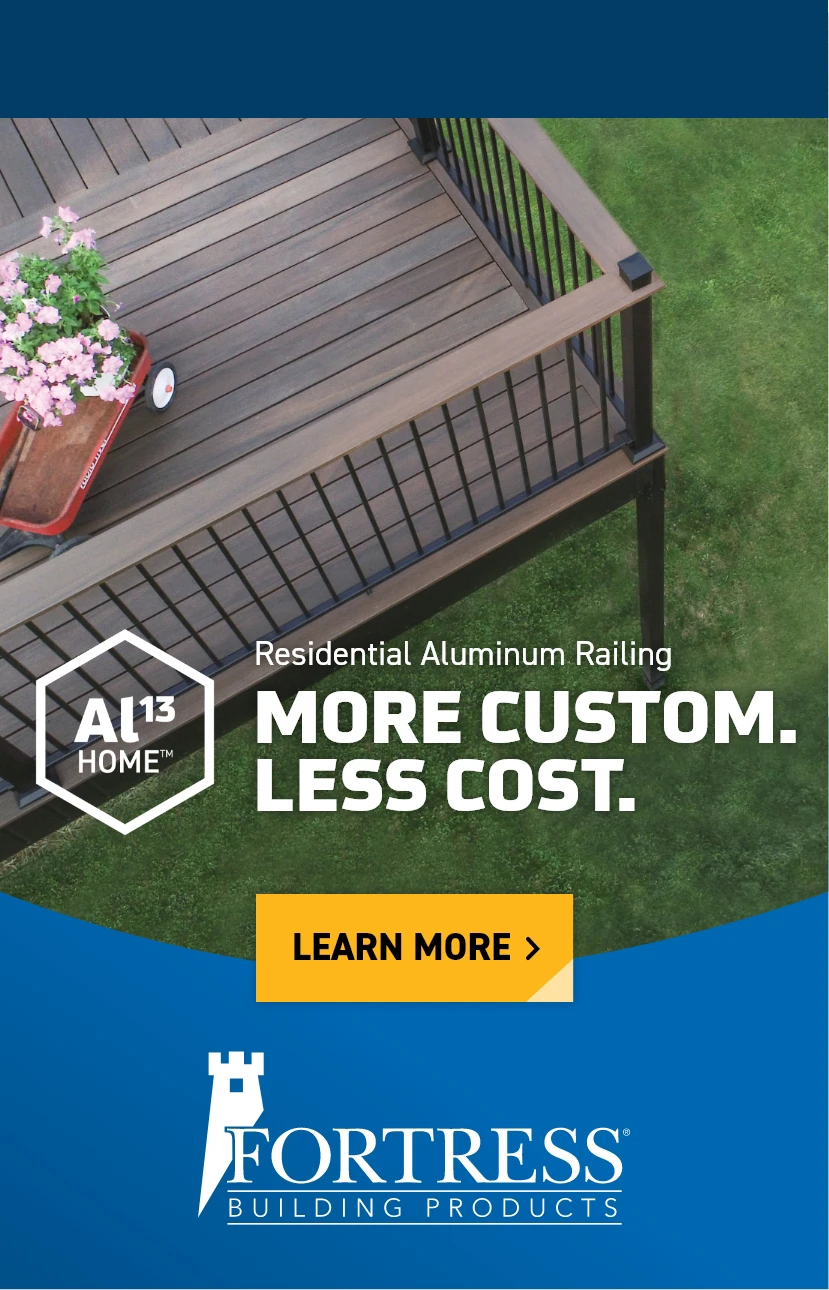People everywhere are looking for ways to set their homes apart, not just from other homes, but from everything that came before. It is, after all, the twenty-first century, and although we're sadly bereft of jetpacks, the race is on to see what this century means to us at home. While we can't control the price of our cable TV packages, we can bring new and modern styles to our home exteriors with industrial chic cable railings.
Cable railing systems are deceptively simple systems that use stainless steel cable pulled taut either horizontally between the posts or vertically between the top and bottom rails. However, simple they may seem at first glance, building cable railings with that clean modern look is difficult. It’s a challenge to drill holes in each post that align in all dimensions when even a slightly uneven deck can cause a visible distortion in the cable. Keeping the tensioners out of sight and away from idle hands can complicate the design, too. Homeowners are probably better off leaving the construction of cable railings to the professionals, but cable railing kits that come pre-assembled may put these elegantly modern railings within the grasp of the DIYer.
Cable Railings for Decks from Scratch
Understanding cable railings require a little bit of knowledge about decks and about how railings are built. Your typical deck is built of pressure-treated lumber-often left unstained and unsealed-and the railing posts are usually the same posts that support the deck around the perimeter. They're just left long, and the deck boards are cut with a jigsaw to go around them. A cable railing system that uses wood posts usually has the holes for the cables drilled through these posts.
A fitting that holds the cable goes in one side of the post, and the other side of the cable is mounted up to a special fitting called a tensioner which allows the cable to be drawn tight. The whole thing is pretty easily created if you're a professional builder who knows all the tricks of the trade as well as how tight cable railings should be. Even then, you'll still want to measure carefully and double-check before committing to drilling. The posts are also structural members, and you can't easily replace one if you make a mistake.
If you're not a professional builder, you may end up creating railings whose cables have an appearance befitting a spider web. That's because if any of the holes through which the cable passes is even slightly out of alignment it can cause a noticeable bend in the cable as it catches on one of the sides of the hole through the post. This is the main difficulty when installing cable railings, and the most common way builders get around it is to use posts that are separate from the support structure, and drill the holes for the cables simultaneously through the posts while they're side by side. There are other tricks that some professional builders use to make misalignment less likely to happen or to disguise it if it does.
- Drilling bigger holes: Since the distortion is most likely caused by cable catching the side of a misaligned hole, you can make the effect disappear by drilling the hole significantly larger than the cable passing through it. The cable is usually an eighth of an inch, so by drilling a quarter-inch hole, the cable can be slightly out of alignment and it’ll be nearly unnoticeable. If the hole is larger than this, say a half-inch, the hole gets very noticeable, and a second technique is needed to hide it.
- Chunky fasteners: The size of the hole doesn't matter too much if it's hidden behind a large washer. Since chunky fasteners are centered on the cable and large enough to cover the entire hole, they will hide it any misalignment and ensure the railings still look neat.
However, even these sorts of tricks of the trade require some skill to pull off. If you're too far out of alignment then there isn't a way to conceal it. Being as little as a quarter-inch off over 12 foot stretch of railing can be undisguisable, and it can happen to experienced professionals. DIYers-or even contractors installing a cable railing for the first time-will find it's far easier to use a cable railing kit instead. It's quite likely that the price of the kit and the installation will cost far less in time and money than a total DIY job would.
Easy-to-Install Cable Railing Kits for Decks
A cable railing kit removes the big problem with building cable railings from scratch by taking care of the alignment for you. Kits provide you with pre-assembled panels in which the cables are already aligned in a steel framework. These panels might use vertical cables stretched between a steel top and bottom rail or horizontal cables stretched between uprights. With a cable railing kit like this, the installer just needs to ensure that the panels are mounted correctly and that the cables are tensioned. These systems still provide a level of customizability, as they can be mounted to wooden rails or a wooden top rail can be added to soften the look of the railings and give them a more traditional feel. Not all railing kits are the same, though. It's important to look for solid manufacturing, quality engineering, and thoughtful design-otherwise, you'll end up just as frustrated during installation (and after) as you would if you built your own system.
The V- and H-series cable railings by Fortress Railing Products are two kits that will last and won’t cause trouble during assembly. Marine-grade stainless steel cables won’t rust and use hidden tensioners for a taut, uninterrupted length of cable. Multiple layers of corrosion-resistant coatings keep the panels’ frames from rusting so they can last and last, just like the stainless cables do. To find out more, contact Fortress Railing or visit Fortress Building Products for other high-quality outdoor products.


